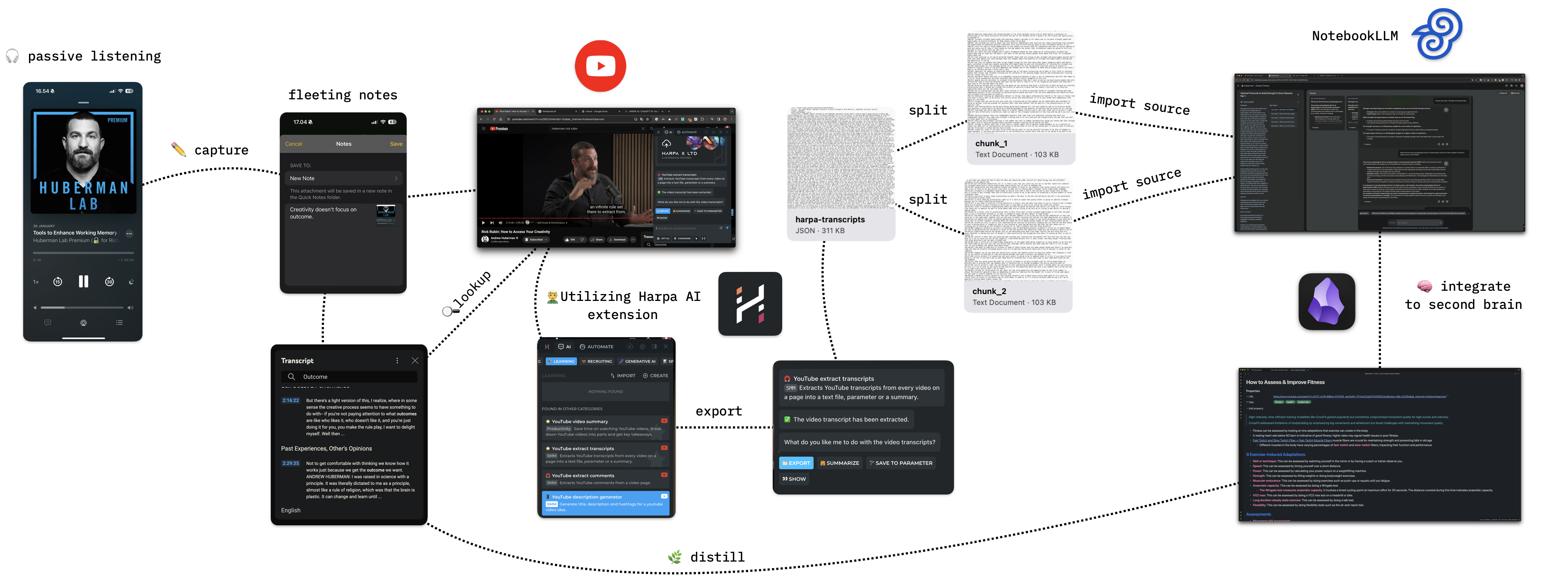Unlocking Knowledge - How I Process Hours of Podcasts Efficiently

I’ve always found it challenging to process and retain the wealth of knowledge offered by long-form mediums, especially series like Huberman Lab podcast, which can span several hours. The real challenge for me has been not just in absorbing this information but in retaining and utilizing it effectively. To overcome this, I’ve crafted a workflow that has completely transformed my approach to learning from these resources. This method is versatile and can be applied to any medium.
Passive Listening and Capture
My learning begins with what I call passive listening. I immerse myself in YouTube videos and podcasts during low-cognitive activities like commuting, exercising, or cooking. This stage is pivotal for:
- Capturing Fleeting Notes: Whenever something catches my attention or sparks curiosity, I quickly take a screenshot on my phone and save it to my Notes app. This ensures I don’t lose any valuable insights and can revisit them later.
Extract
After identifying content that deserves further exploration, I employ a specific process to extract and manage the transcripts:
- Utilizing Harpa.AI Extension: I use this tool to convert the audio from YT videos into a JSON file format, which I then save directly to my computer.
-
Addressing Prompt Limit: Be aware of the limitations faced by LLM’s in handling large volumes of text, the limit is typically around 4096 tokens for prompts. I have encountered issues even when uploading files and docs.
- Chunking Content: break down long transcripts into smaller chunks.
Distill
With the transcript in hand, I embark on the learning phase:
- Importing Text into Google NotebookLM: This platform has been a game-changer for me. It enables me to summarize content, distill key takeaways, and draft action steps. Moreover, it offers the capability to ask AI for clarifications, significantly enhancing my grasp of complex subjects. This discovery has been revolutionary, allowing me to consolidate all my resources into notebooks where I can summarize, highlight, and pose questions. It has made learning not just more efficient but also thoroughly enjoyable.
- Note-Taking: Throughout this process, I diligently distill the notes to bolster my understanding and facilitate future recall.
Integration into Second Brain
Integrating insights into my Second Brain (Obsidian) In this final phase, I:
- Organize: I meticulously organize my notes in a manner that resonates with me, ensuring they’re readily accessible for future reference.
- Make Connections: I actively link related concepts and ideas, crafting a comprehensive knowledge network that fosters deeper learning and comprehension.
Notes mentioning this note
There are no notes linking to this note.